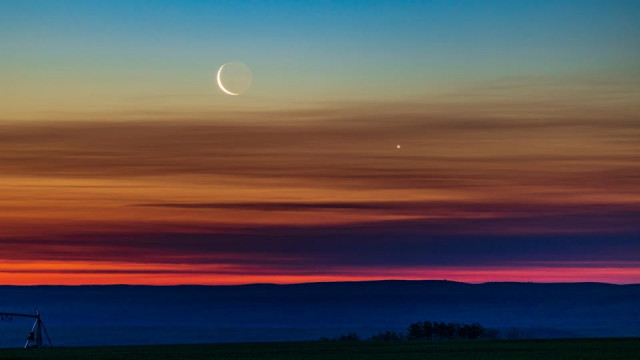Celestial delights this December: New moon, meteor showers, planetary conjunctions
If you're in the Northern or Southern Hemisphere, take some time to look up, there's plenty to marvel at this month!

The celestial events of December promise an exciting time for stargazers, with opportunities to observe a new moon, meteor showers, and planetary alignments. Here’s a breakdown of what to look for in the night sky over the coming days.
New Moon on December 1
The new moon occurs at 1:21 am Eastern Time (0621 UT) on December 1, creating dark skies ideal for meteor viewing. During a new moon, the moon is positioned between the Earth and the Sun, making it invisible unless it coincides with a solar eclipse.
Phoenicid Meteor Shower Peaks
On December 2, the Phoenicid meteor shower reaches its peak, offering Southern Hemisphere observers the best views. The shower is active from November 28 to December 9, with meteors radiating from the constellation Phoenix.
Though typically modest, this shower has produced bursts of activity in the past, notably in 1956 with a storm of 100 meteors per hour. The meteors are slow-moving, making them easier to spot against the dark, moonless sky.
Close Pass of the Moon and Venus
On December 4, the waxing crescent moon will make a close approach to Venus, creating a spectacular conjunction visible in the early evening sky. Observers in New York City will see the moon pass below and to the left of Venus around 5:41 pm Eastern Time, with both setting shortly after 7:30 pm.
Southern Hemisphere viewers will experience an even more dramatic view. In Buenos Aires, for example, the conjunction occurs at sunset, with Venus shining brightly near the moon against a darkening sky.
Visible Planets in December
Throughout early December, Venus, Saturn, Jupiter, and Mars will be visible to the naked eye. Venus dominates the western sky after sunset, while Saturn can be seen almost due south. Jupiter rises in the east at dusk, and Mars follows later in the evening.
In the Southern Hemisphere, Jupiter and Mars will appear lower on the horizon due to the austral summer.
Winter and Summer Constellations
Northern Hemisphere observers will enjoy the return of winter constellations, including Orion, Taurus, and Gemini. By 10 pm, the Winter Hexagon—a grouping of bright stars from six constellations—will be fully visible.
In the Southern Hemisphere, summer constellations like Orion (upside down), Sirius, and Canopus dominate the sky. The Southern Cross, a favorite feature for austral stargazers, will also make its nightly appearance.
Why It Matters
December’s celestial events offer a mix of rare conjunctions and seasonal highlights, providing ample opportunities for astronomy enthusiasts and casual observers alike.
The absence of moonlight during the new moon will make faint meteors and deep-sky objects more visible, while the Venus-moon conjunction adds a visual treat to the evening sky.
Whether you're in the Northern or Southern Hemisphere, take some time to look up—there's plenty to marvel at this December.

















COMMENTS
Comments are moderated and generally will be posted if they are on-topic and not abusive.
For more information, please see our Comments FAQ